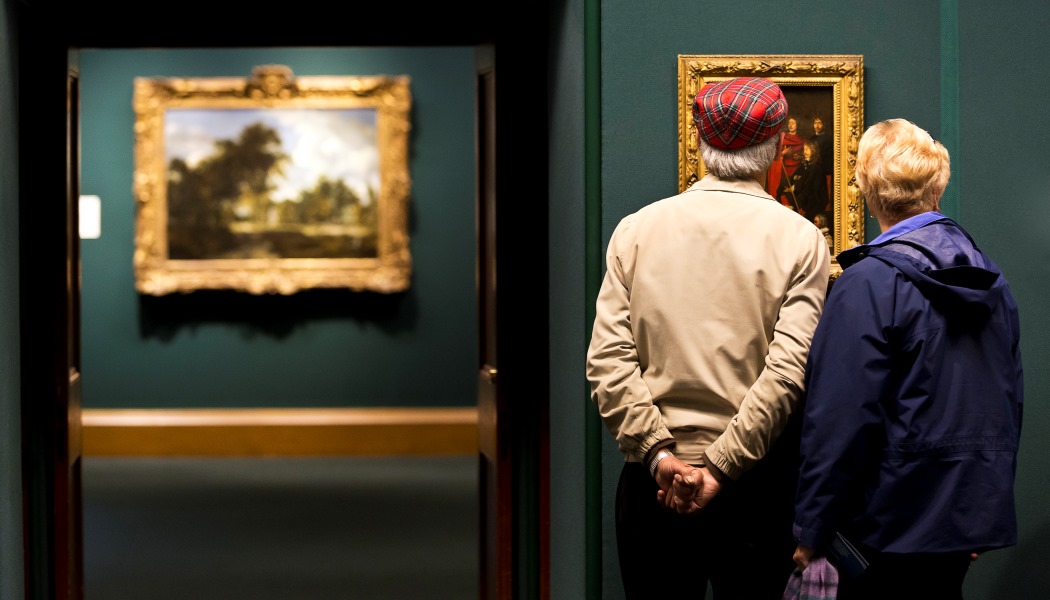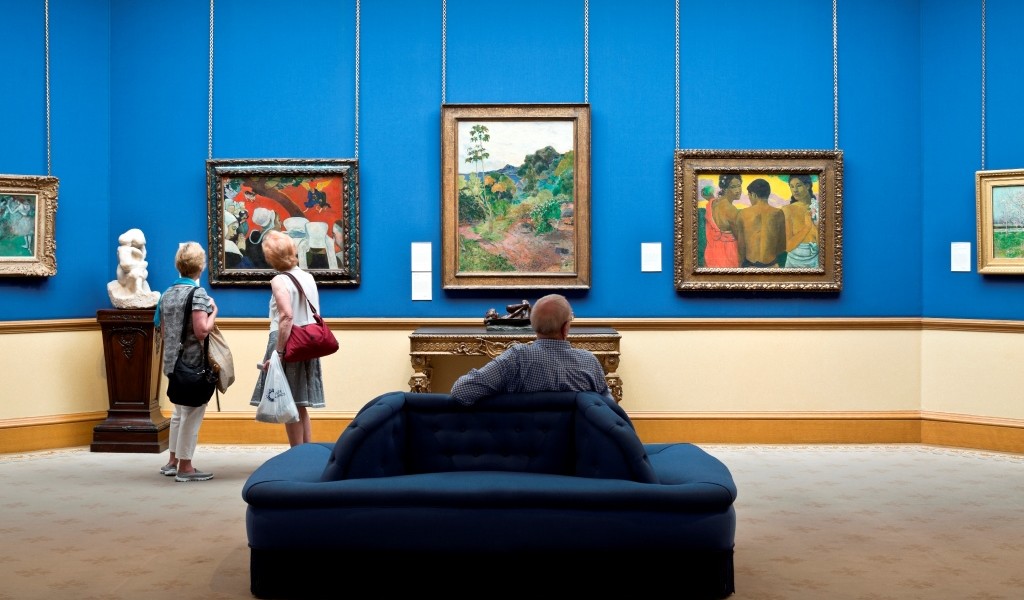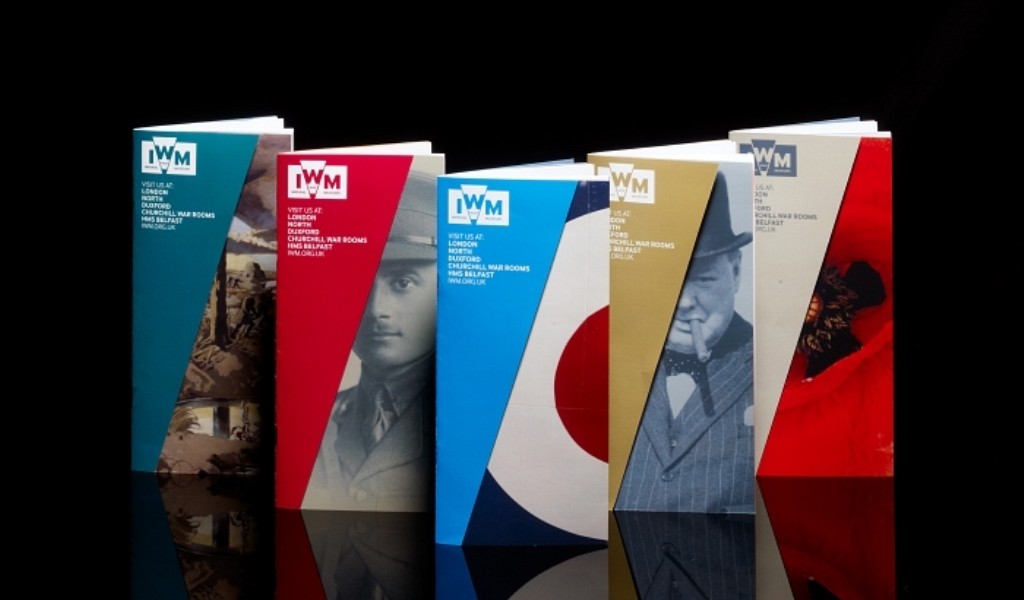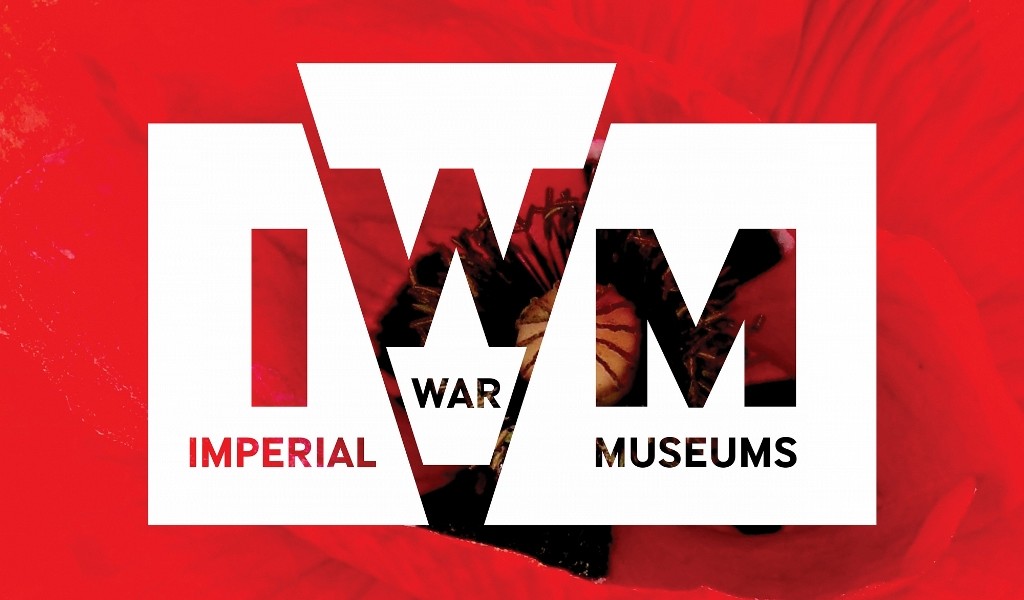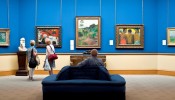The aim of the NGS new rebranding project is to develop clear, compelling, distinctive messages, which they can use to engage more audiences and in a progressively competitive environment and at a time of government cuts, the Galleries’ strategic aim is to raise its profile, build and diversify its audiences and increase income.
The brand strategy, however, is not a stand-alone project – it is an integral part of the galleries’ audience development strategy, which will help it communicate with more diverse audiences, by bringing clarity to its messages and ensure it has a holistic and consistent approach to all its public facing activity – and the branding will be a significant step in this process.
“There is increasing focus and investment within museums and galleries to understand the needs and motivations of a 21st century audience,” says Patricia Convery, Acting Director of Audience Engagement at the National Galleries of Scotland. “As a national organisation NGS has a responsibility to reach the widest possible audience with our work and this is not just about engaging with the physical visitors to our galleries, but using our collections and content in imaginative and relevant ways to also engage a wider, digital audience.”
NGS began discussing the need to develop a brand strategy in 2015 and announced the process with a public tender last autumn. The brand project, which began in February, is part of a number of interrelated projects currently underway at NGS, including the development of a new business plan and audience engagement strategy and a thorough review and rebuild of the galleries’ website.
“NGS is a multi-site organisation with three different galleries,” says Convery. “One of the key questions the brand strategy will help us answer is what we value or believe in as a multi-site organisation. Having one set of shared values across the three galleries will give us more consistency and cohesion, both internally and externally and provide us with a strong foundation for the way in which we engage with existing and potential audiences.”
Convery says the ambition is that the brand strategy will also become a daily, living guide for decision making for all the staff whatever their focus – whether they are planning an exhibition, conducting a performance review, developing a new partnership or creating a retail strategy – these are all ways in which they will engage with and develop the galleries’ audiences.
“So far we’ve had extremely positive feedback from our staff,” she says. “Everyone can see the potential for growth and change and want to be involved in the development of the brand. This process is already giving the organisation a feeling of confidence for the future.”
NGS appointed Jane Wentworth Associates (JWA) – which has previous experience on branding for the Imperial War Museum, Royal Academy of Art and Philadelphia Museum of Art – to complete the project after a competitive tender. Convery says the reasons for bringing JWA on board were they could deliver an international perspective, a rigorous methodology and crucially ‘could demonstrate extensive experience of engaging staff in the process of developing a brand strategy’.
Jo Marsh, Director, JWA says she believes that audience development should be part of a museum’s DNA, alongside academic expertise, conservation and education. “The main objectives are to work with and engage all the galleries’ staff in the development of the brand,” says. “We need to bring cohesiveness to all their public facing sites and activities – both physical and digital, outreach and partnerships in order to help to raise their profile both nationally and internationally”
Marsh says that NGS also needs to think of new ways of raising revenue and the brand project will support the new business plan process with a key objective of the brand project will also be to help NGS reach and engage more diverse audiences. “The galleries’ primary audience or community is their staff and we believe you have to engage and work with the people who deliver the experience in the development of a brand strategy,” she says.
This relies on the galleries having a coherent and relevant story to tell and a shared sense of direction on the inside, from which they can build clarity and distinctiveness and loyalty and conviction on the outside, making the brand transformative both on the inside and outside.
“By every member of staff understanding what the gallery stands for, communications will be clearer and more consistent, programming will be more coherent, experiences will be more joined up,” says Marsh. “They will be able to use the new values we will develop to make the right decisions, which ultimately leads to clearer and more vivid brand – as staff will be able to evaluate if something is on or off brand.”
Having a brand strategy provides a framework she says by which to judge current activities or future ventures and can be of enormous benefit when you have limited resources – which is the case for many museums and galleries. Doing more with less means deciding what really matters, knowing what you are trying to achieve and focusing resources on what will make the most impact.
“There is growing attention and profile given to audience engagement in museums,” she says. “It’s a way of describing the fundamental consideration of what a museum is; why it does what it is does and crucially whom it is for. Focusing on how to engage audiences is a vital way for museums to ensure that they can stay relevant and adapt in a fast changing and increasingly volatile world.”
Marsh says the brands that capture our imaginations and engage us stand out because they stand for something and a brand has to be built on something authentic. “Or what makes that organisation special? It’s how you communicate those strengths through every touch point that can make it appealing. But it’s also about knowing what will engage and what is relevant to peoples’ lives, so brands need to understand and keep pace with the needs and motivations of their audiences.”
The National Galleries of Scotland rebranding is expected to be completed later this summer.
In Focus: Audience Development
This case study is part of an In Focus feature on Audience Development. Click here to see the introduction and links to three more case studies
Main Image
Scottish National Gallery, The Mound, Edinburgh. National Galleries of Scotland. Photograph by Eoin Carey

